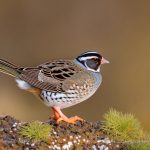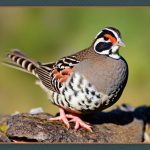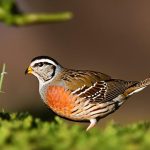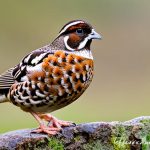When it comes to hatching quail, it is crucial to leave them in the incubator for a period of time after they have hatched. This is important for several reasons. Firstly, the incubator provides a controlled environment that is warm and safe for the newly hatched quail. This is essential for their survival as they are still very fragile at this stage. The incubator also provides a stable humidity level which is crucial for the health and well-being of the quail. Additionally, leaving the quail in the incubator allows them time to dry off completely. When they first hatch, they are wet and need time to dry out before they can be moved to a different environment. This drying process is important for their feathers and overall health.
Furthermore, leaving the quail in the incubator after hatching allows them time to rest and regain their strength. Hatching is a tiring process for the quail and they need time to recover before they are ready to be moved. The incubator provides a quiet and peaceful environment for them to rest without any disturbances. This period of rest is crucial for their development and overall well-being. In conclusion, leaving quail in the incubator after hatching is important for their survival, health, and development. It provides them with a warm, safe, and controlled environment where they can dry off, rest, and regain their strength before they are ready to be moved to a different environment.
Key Takeaways
- Leaving quail in the incubator after hatching is important for their health and development
- The ideal duration for keeping quail in the incubator after hatching is 24-48 hours
- Monitor quail after hatching in the incubator for signs of distress or weakness
- Provide water and food for quail in the incubator to ensure their survival and well-being
- Signs that quail are ready to leave the incubator include active movement and feeding behavior
Ideal Duration for Keeping Quail in Incubator After Hatching
The ideal duration for keeping quail in the incubator after hatching can vary depending on several factors. Generally, it is recommended to leave the quail in the incubator for 24-48 hours after hatching. This allows them enough time to dry off completely, rest, and regain their strength before they are ready to be moved. However, the ideal duration can also depend on the specific conditions of the hatch and the individual needs of the quail. If the hatch was particularly difficult or if the quail are weak or underdeveloped, it may be necessary to leave them in the incubator for a longer period of time. On the other hand, if the hatch was smooth and the quail are strong and active, they may be ready to leave the incubator sooner.
It is important to monitor the quail closely during this time to determine when they are ready to leave the incubator. Signs that they are ready to leave include being fully dry, active, and alert. Additionally, they should be able to stand and move around confidently. It is important not to rush this process as premature removal from the incubator can have negative effects on the health and development of the quail. In conclusion, the ideal duration for keeping quail in the incubator after hatching is generally 24-48 hours, but this can vary depending on individual circumstances and should be determined based on the specific needs of the quail.
Monitoring Quail After Hatching in the Incubator
Monitoring quail after hatching in the incubator is crucial to ensure their health and well-being during this critical period. There are several key factors to monitor during this time. Firstly, it is important to monitor their activity level. Newly hatched quail should be active and alert, moving around and exploring their environment. If they appear lethargic or weak, it may be a sign that they are not ready to leave the incubator yet. Additionally, it is important to monitor their physical condition. They should be fully dry with fluffy feathers and should be able to stand and move around confidently. If they are still wet or have trouble standing, they may need more time in the incubator.
Furthermore, it is important to monitor their eating and drinking behavior. While in the incubator, quail do not need food or water as they absorb the yolk sac before hatching which provides them with nutrients for the first 24-48 hours of life. However, once they are ready to leave the incubator, it is important to provide them with food and water. Monitoring their eating and drinking behavior can help determine when they are ready for this transition. In conclusion, monitoring quail after hatching in the incubator is essential for ensuring their health and well-being during this critical period. By closely observing their activity level, physical condition, and eating and drinking behavior, it is possible to determine when they are ready to leave the incubator.
Providing Water and Food for Quail in the Incubator
While quail do not need food or water immediately after hatching as they absorb the yolk sac before hatching which provides them with nutrients for the first 24-48 hours of life, it is important to provide them with food and water once they are ready to leave the incubator. This transition should be carefully managed to ensure their health and well-being. When providing water for quail in the incubator, it is important to use a shallow dish or waterer that is easy for them to access without risk of drowning. Additionally, it is important to use clean water and change it regularly to prevent contamination.
When providing food for quail in the incubator, it is important to use a high-quality starter feed that is specifically formulated for quail chicks. This feed should be finely ground to make it easy for them to eat and digest. Additionally, it is important to provide them with access to food at all times so that they can eat whenever they are hungry. It is also important to monitor their eating behavior closely during this time to ensure that they are getting enough nutrition. In conclusion, providing water and food for quail in the incubator is an important part of their care once they are ready to leave. By using appropriate waterers and feeders and monitoring their eating behavior closely, it is possible to ensure that they have access to the nutrition they need for healthy growth and development.
Signs that Quail are Ready to Leave the Incubator
There are several signs that indicate when quail are ready to leave the incubator and transition to a different environment. Firstly, they should be fully dry with fluffy feathers. This indicates that they have had enough time to dry off after hatching and are ready for a different environment. Additionally, they should be active and alert, moving around and exploring their surroundings confidently. Lethargy or weakness can indicate that they are not yet ready to leave the incubator.
Furthermore, quail should be able to stand and move around confidently on their own. If they have trouble standing or moving, it may be a sign that they need more time in the incubator before they are ready to leave. Finally, once they are ready to leave the incubator, they should be able to eat and drink independently. This indicates that they are ready for the transition to a different environment where food and water will be readily available. In conclusion, there are several signs that indicate when quail are ready to leave the incubator including being fully dry with fluffy feathers, being active and alert, being able to stand and move confidently, and being able to eat and drink independently.
Potential Risks of Keeping Quail in the Incubator for Too Long
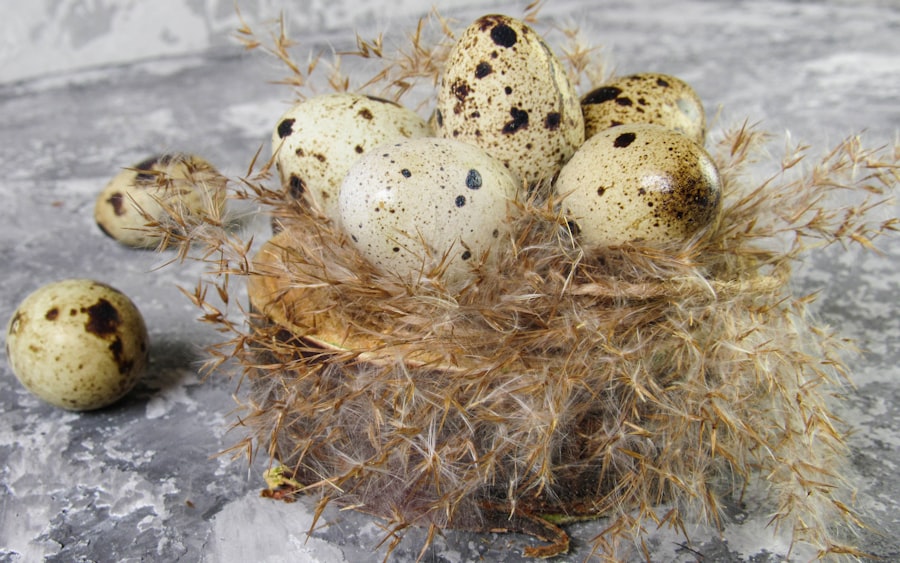
While it is important to leave quail in the incubator for a period of time after hatching, there are potential risks associated with keeping them in the incubator for too long. One potential risk is dehydration. If quail are kept in the incubator for an extended period of time without access to water, they may become dehydrated which can have negative effects on their health and development. Additionally, keeping quail in the incubator for too long can lead to overcrowding as they grow larger and require more space.
Furthermore, prolonged exposure to high humidity levels in the incubator can increase the risk of respiratory issues for the quail. It is important to monitor humidity levels closely during this time and make adjustments as needed to ensure that it remains within a safe range for the health of the quail. In conclusion, while it is important to leave quail in the incubator for a period of time after hatching, there are potential risks associated with keeping them in the incubator for too long including dehydration, overcrowding, and respiratory issues due to prolonged exposure to high humidity levels.
Tips for Successfully Transitioning Quail out of the Incubator
Successfully transitioning quail out of the incubator requires careful planning and management to ensure their health and well-being during this critical period. Firstly, it is important to provide them with a suitable brooder environment that is warm, safe, and free from drafts. This will help them adjust to their new environment more easily and reduce stress during this transition period. Additionally, it is important to provide them with access to food and water at all times so that they can eat and drink whenever they need.
Furthermore, it is important to monitor their behavior closely during this time to ensure that they are adjusting well to their new environment. Signs of stress or illness should be addressed promptly to prevent any negative effects on their health and development. Finally, it is important to handle them gently and avoid causing unnecessary stress during this transition period. In conclusion, successfully transitioning quail out of the incubator requires providing them with a suitable brooder environment, access to food and water at all times, monitoring their behavior closely, and handling them gently to reduce stress during this critical period of adjustment.
If you’re wondering how long to keep quail in an incubator after hatching, you may also be interested in learning about the benefits of using a SnapLock chicken coop. SnapLock coops are designed to provide a safe and comfortable environment for your poultry, ensuring their well-being and productivity. To find out more about the advantages of using a SnapLock chicken coop, check out this informative article on poultrywizard.com.
FAQs
How long should quail chicks stay in the incubator after hatching?
Quail chicks should stay in the incubator for at least 24-48 hours after hatching to dry off and fluff up.
Why is it important to keep quail chicks in the incubator after hatching?
Keeping quail chicks in the incubator allows them to fully dry off, fluff up, and gain strength before being moved to a brooder.
What are the ideal conditions for quail chicks in the incubator after hatching?
The ideal conditions for quail chicks in the incubator after hatching include a temperature of around 95-100 degrees Fahrenheit and high humidity to help them dry off.
Can quail chicks be left in the incubator for longer than 48 hours after hatching?
It is not recommended to leave quail chicks in the incubator for longer than 48 hours after hatching, as they will need to be moved to a brooder to access food, water, and space to move around.
Meet Walter, the feathered-friend fanatic of Florida! Nestled in the sunshine state, Walter struts through life with his feathered companions, clucking his way to happiness. With a coop that’s fancier than a five-star hotel, he’s the Don Juan of the chicken world. When he’s not teaching his hens to do the cha-cha, you’ll find him in a heated debate with his prized rooster, Sir Clucks-a-Lot. Walter’s poultry passion is no yolk; he’s the sunny-side-up guy you never knew you needed in your flock of friends!


